 "ttyymmnn" (ttyymmnn)
"ttyymmnn" (ttyymmnn)
08/01/2019 at 08:48 ē Filed to: None
 2
2
 22
22
 "ttyymmnn" (ttyymmnn)
"ttyymmnn" (ttyymmnn)
08/01/2019 at 08:48 ē Filed to: None |  2 2
|  22 22 |
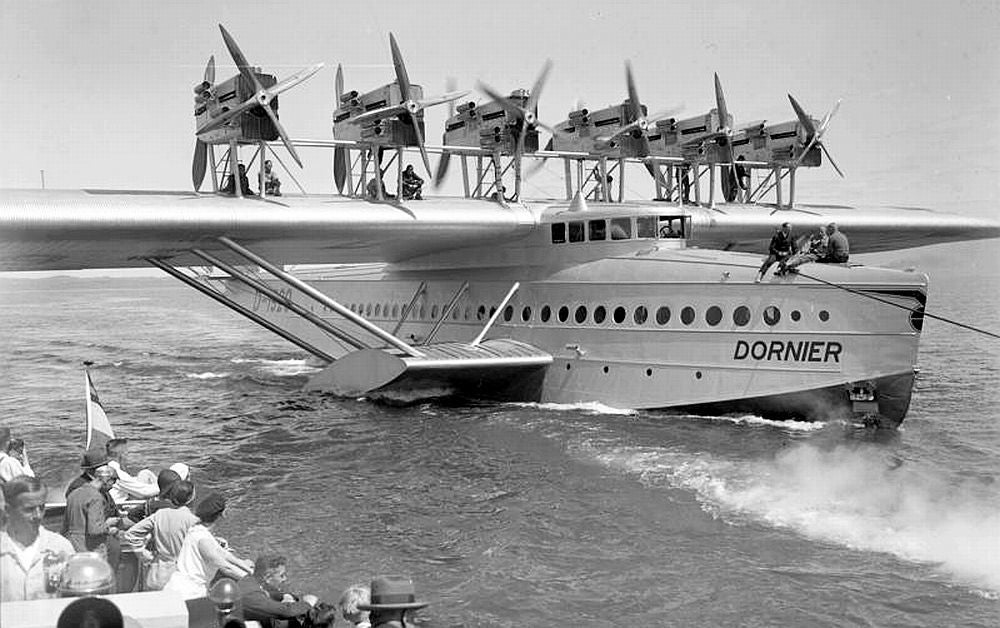
Another flying boat that looks like a boat †with wings. Itís the massive Dornier Do X, the largest and heaviest flying boat when it first took off in 1929. This is the engineer working the throttles. Looks like it could be the engine room of an ocean liner.†
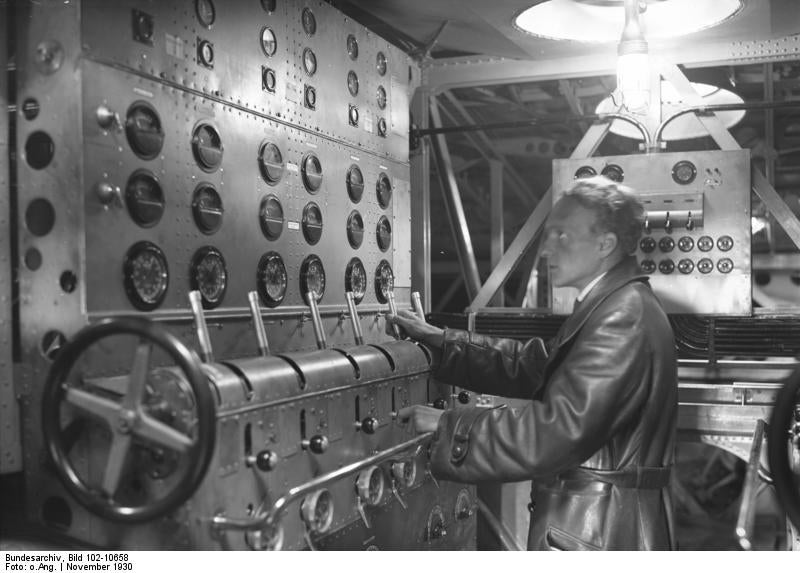
 vondon302
> ttyymmnn
vondon302
> ttyymmnn
08/01/2019 at 08:53 |
|
Neat. Hard to believe that flew.
Good morning!
 Thomas Donohue
> ttyymmnn
Thomas Donohue
> ttyymmnn
08/01/2019 at 09:00 |
|
Whatís with the leather coat in the engine/control room?† I hope he took that off as soon as the cameramen left.
 SilentButNotReallyDeadly...killed by G/O Media
> ttyymmnn
SilentButNotReallyDeadly...killed by G/O Media
> ttyymmnn
08/01/2019 at 09:09 |
|
Mad scientist goes full throttle...nothing much ever changes does it?
 Ash78, voting early and often
> ttyymmnn
Ash78, voting early and often
> ttyymmnn
08/01/2019 at 09:31 |
|
My dad has a hand-carved wooden model of this (about 12" long) in his office. I think he found it at a
street vendor
in Singapore in the early 90s. Pretty random discovery. I canít imagine these were just flying off the shelves...
 ttyymmnn
> vondon302
ttyymmnn
> vondon302
08/01/2019 at 09:56 |
|
Dat wing doe. Super thick. Likely influenced by Hugo Junkers.
The [ Junkers J 1 ] was the worldís first aircraft to also feature another innovation: an unbraced, cantilever monoplane wing with a thick profile guaranteeing the wingís inner stability. Already in 1910 Professor Junkers had received a patent for his concept of the ďthick wing.Ē In his own wind tunnel he then tested a multitude of wing profiles, confirming his expectation that a thick wing resulted in no more resistance than the thin, curved wing profiles common at the time. Instead, the thick wing allowed for a much better uplift and could carry additional load. Both Junkersí innovations Ė the metal construction and the self-supporting thick wing Ė are influencing aircraft manufacturing still today. ( junkers.de )
 ttyymmnn
> Thomas Donohue
ttyymmnn
> Thomas Donohue
08/01/2019 at 09:56 |
|
Probably pretty cold.†
 ttyymmnn
> SilentButNotReallyDeadly...killed by G/O Media
ttyymmnn
> SilentButNotReallyDeadly...killed by G/O Media
08/01/2019 at 09:58 |
|
Just noticed the big wheel on the end. Iím guessing thatís so he could move all throttles in unison. And maybe the handles beneath unlocked individual throttles.
 ttyymmnn
> Ash78, voting early and often
ttyymmnn
> Ash78, voting early and often
08/01/2019 at 10:00 |
|
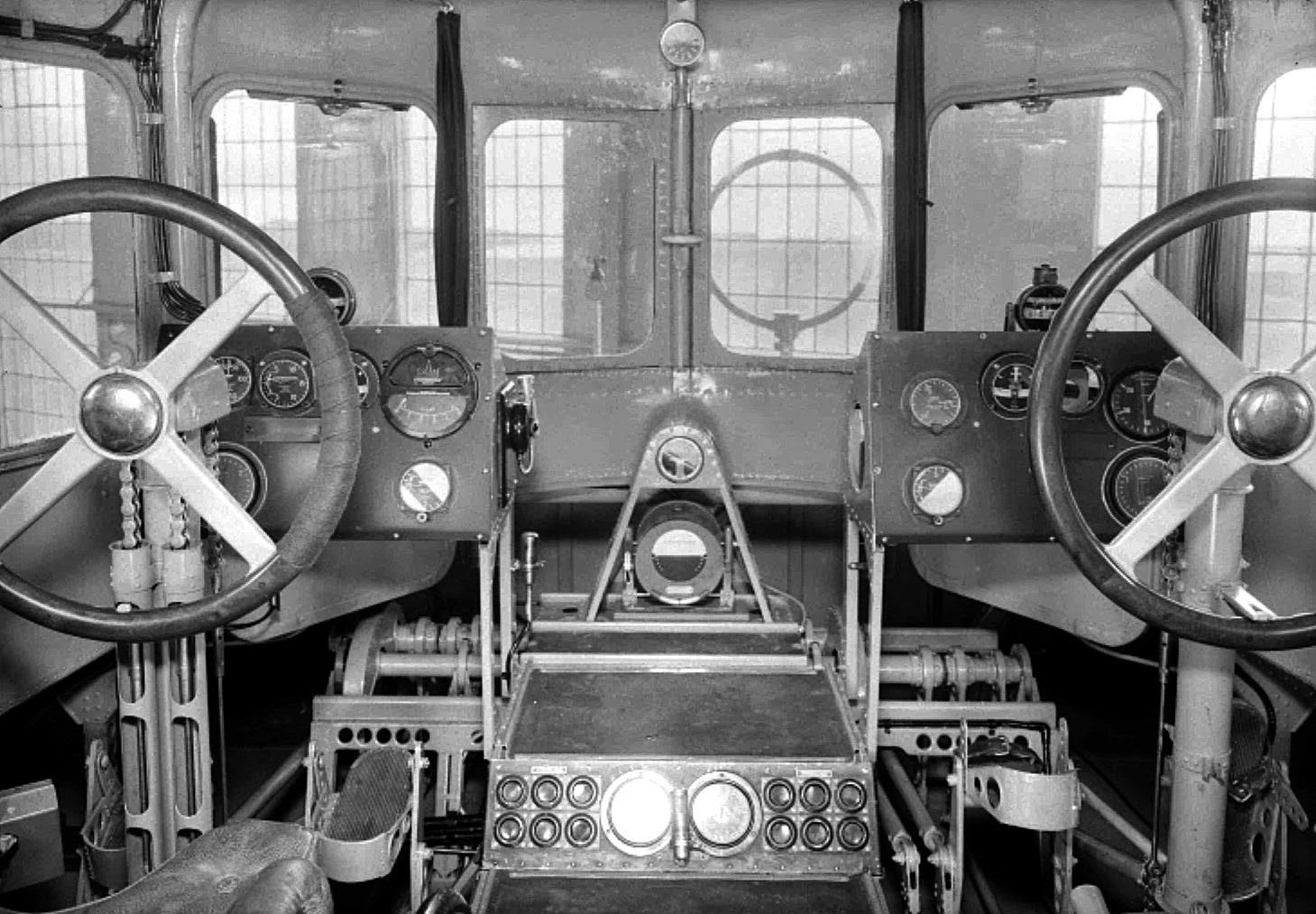
They should have just put big shipís wheels inside. I wonder too about the wire mesh over the windows. Dig the chains, too, on the yoke. That thing must have been a beast to fly.
 facw
> ttyymmnn
facw
> ttyymmnn
08/01/2019 at 10:40 |
|
I donít think thatís wire mesh over the windows? It looks like itís outside and all on one plane instead of being aligned with the windows. If anything I think those may be the mullions/muntins dividing the panes of hangar windows or something. Unless you are talking about something else Iím completely missing.
 facw
> ttyymmnn
facw
> ttyymmnn
08/01/2019 at 10:43 |
|
I wonder what he would have thought of the F-104:
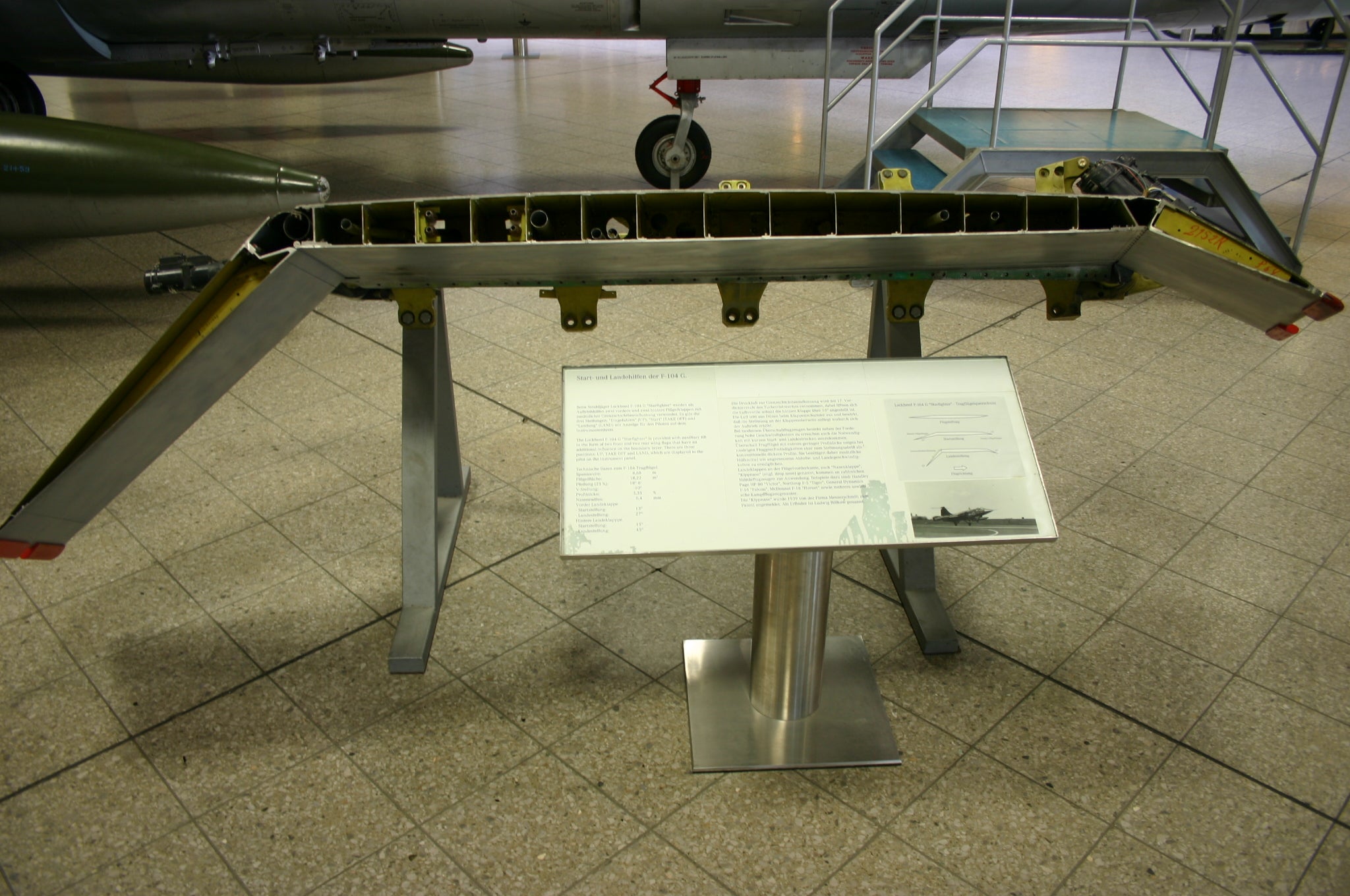
 RamblinRover Luxury-Yacht
> ttyymmnn
RamblinRover Luxury-Yacht
> ttyymmnn
08/01/2019 at 11:00 |
|
Another early big flying boat with a boatís
pilothouse cockpit.
 ttyymmnn
> facw
ttyymmnn
> facw
08/01/2019 at 11:19 |
|
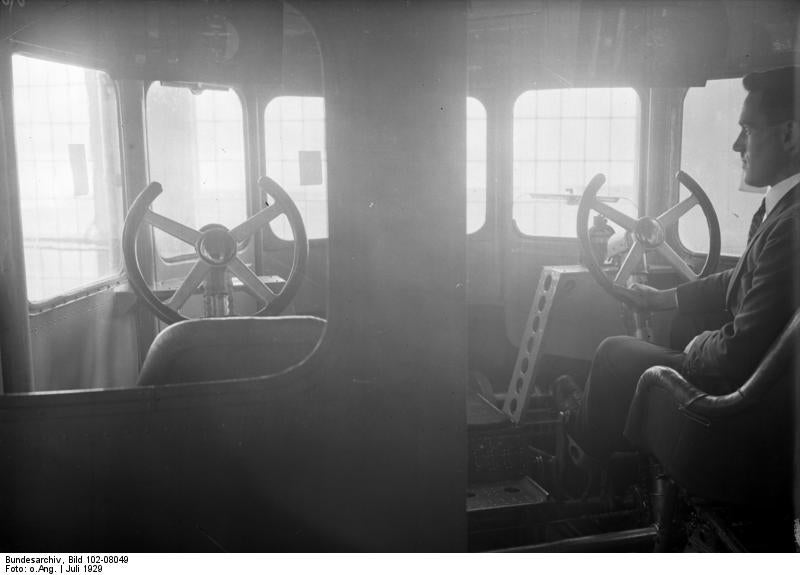
They are visible in this photo as well. The nose is relatively short, so I suppose they could be from an external wall. Makes sense.
 ttyymmnn
> facw
ttyymmnn
> facw
08/01/2019 at 11:22 |
|
Before I wrote that reply, I spent some time reading about wing thickness vis-a-vis lift, drag, critical Mach, etc. Thick wings suck for supersonic flight, as Kelly Johnson (and others) clearly understood. The Do X flew 150 mph max. Iím sure that big wing housed a lot of fuel, too.
 ttyymmnn
> RamblinRover Luxury-Yacht
ttyymmnn
> RamblinRover Luxury-Yacht
08/01/2019 at 11:22 |
|
And round portholes for windows.
 RamblinRover Luxury-Yacht
> ttyymmnn
RamblinRover Luxury-Yacht
> ttyymmnn
08/01/2019 at 11:33 |
|
...although, given the window issues with the Comet, round portholes are hardly a bad idea.
 Thomas Donohue
> ttyymmnn
Thomas Donohue
> ttyymmnn
08/01/2019 at 11:42 |
|
Good point. I actually pictured him in a boiler room. Just realized those arenít steam-p owered propellers!
 ttyymmnn
> RamblinRover Luxury-Yacht
ttyymmnn
> RamblinRover Luxury-Yacht
08/01/2019 at 12:29 |
|
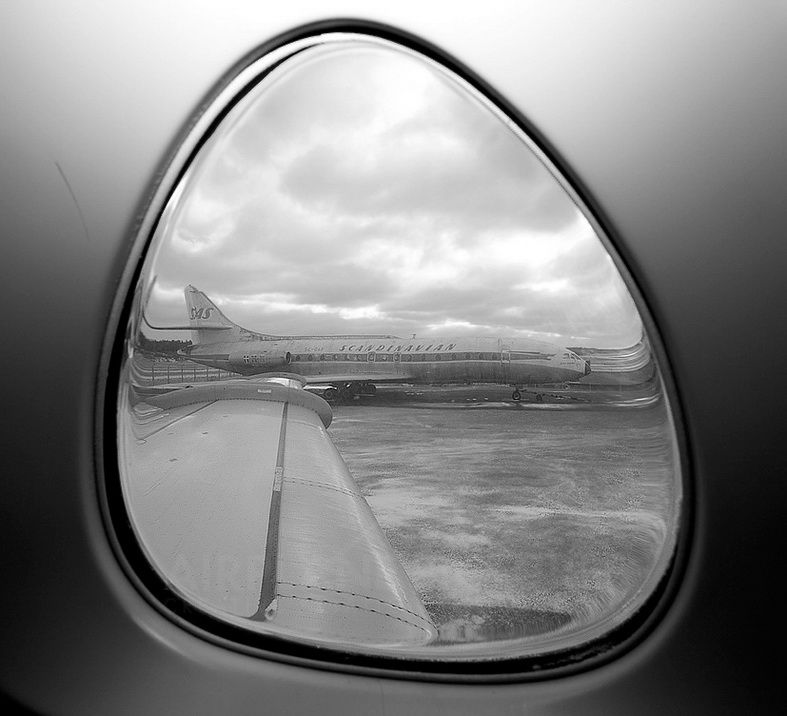
Iím still a huge fan of the teardrop windows on the Caravelle.
 RamblinRover Luxury-Yacht
> ttyymmnn
RamblinRover Luxury-Yacht
> ttyymmnn
08/01/2019 at 12:51 |
|
They make a great deal of logical sense from a human factor perspective. Dipped further forward to permit seeing forward easier, dipped back far enough to let the view be wide, tapered to the top (because nothing is worth looking at up there, and the size is reduced overall), and the shape allows it to trick the eye as to how much space is in the cabin as a result - a big window, but with a seemingly wider space between windows. Not to mention a more appealing shape to human sensibility than an oval or pure ďeggĒ.
All that, and stress safe. Sheer elegance.
 ttyymmnn
> RamblinRover Luxury-Yacht
ttyymmnn
> RamblinRover Luxury-Yacht
08/01/2019 at 13:35 |
|
And one of my all-time favorite aircraft. It just screams of the era.
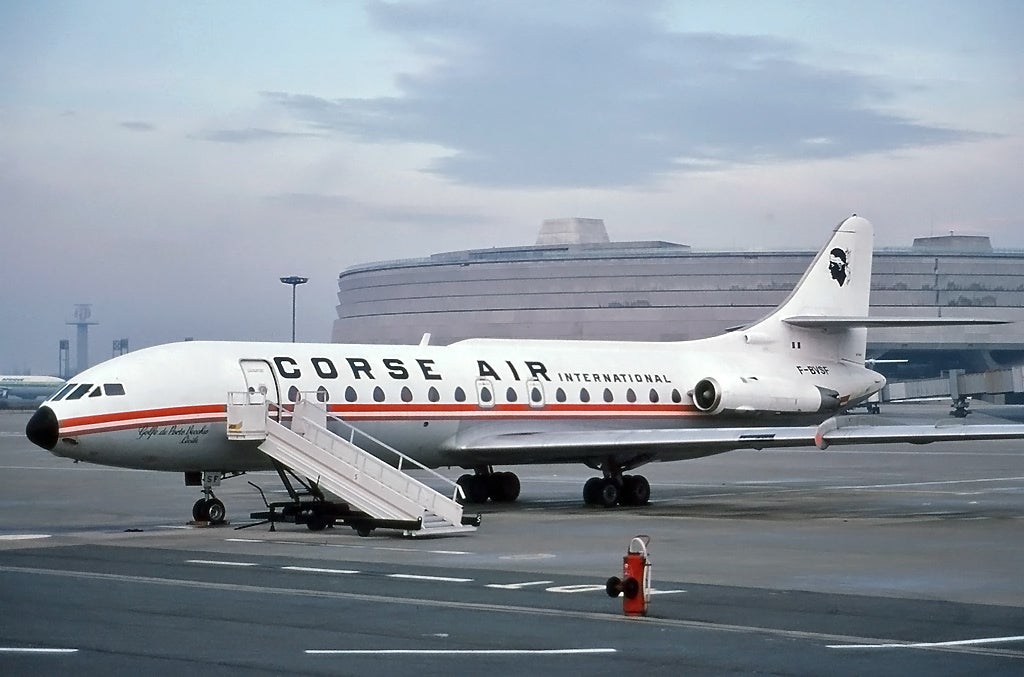
The nose of the Caravelle was taken directly from the Comet, which explains the obvious similarities. Just a gorgeous airplane.
 InFierority Complex
> ttyymmnn
InFierority Complex
> ttyymmnn
08/01/2019 at 14:10 |
|
It seems like p ush p ull props were a pretty popular thing for flying boats at the time.
 ttyymmnn
> InFierority Complex
ttyymmnn
> InFierority Complex
08/01/2019 at 14:26 |
|
Underpowered engines were also pretty popular, so the more the better. The Do X had 12 engines.†
 WilliamsSW
> ttyymmnn
WilliamsSW
> ttyymmnn
08/01/2019 at 16:50 |
|
Thick wings suck for supersonic flight but are great for slow flight and getting heavy loads airborne.†